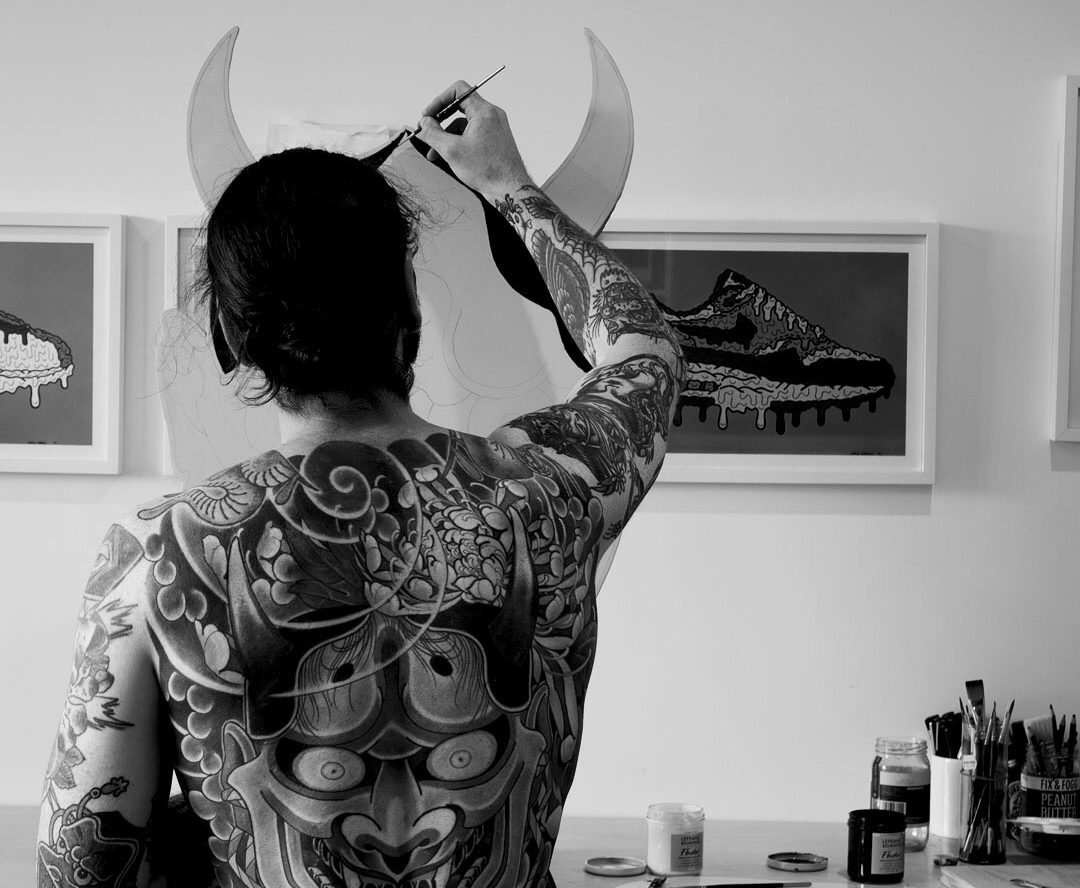With everything that has happened in 2020 (so far), it seems like a long, long time ago that artist and designer Tom Bell told me he would be staging a solo show at Absolution this year. But while what seems like an age has passed, I have maintained a level of excitement about the exhibition Bell has come to call Adoration. The show features a body of work that combines both the artist’s established interest in the imagery and themes of Japanese art and culture, but with a new material approach, his digital rendering replaced by hand-painted cut-outs. The sense of reverence for the subject matter (the show’s title a reference to that debt) is empowered by the evidently pain-staking process of manual brush strokes. Bell’s works, whether paintings, stickers, digital prints, tiny enamel pins, t-shirt designs or illustrations, are alluring, their soft pastel colours and dynamic yet sparse compositions combining with the loaded symbolism of Japanese visual culture to feel both traditional and contemporary.
I met Tom a few years ago, he was with his ‘art fam’ as he calls them, at an exhibition opening at Fiksate. Since then his face has become a familiar one at places like Fiksate, Supreme and Smash Palace, always up for a yarn. But when we sat down to chat for this interview, I learned a lot more about him, from the Wellington-raised artist’s relationship with Christchurch, his interests in stencils and tattoos, and his journey to opening Adoration. Part of what made the discussion so engaging was Tom’s energy, he flew between thoughts, earnest and honest, clearly excited and invigorated by the upcoming show and what he had learned as an artist and a person over the last year.
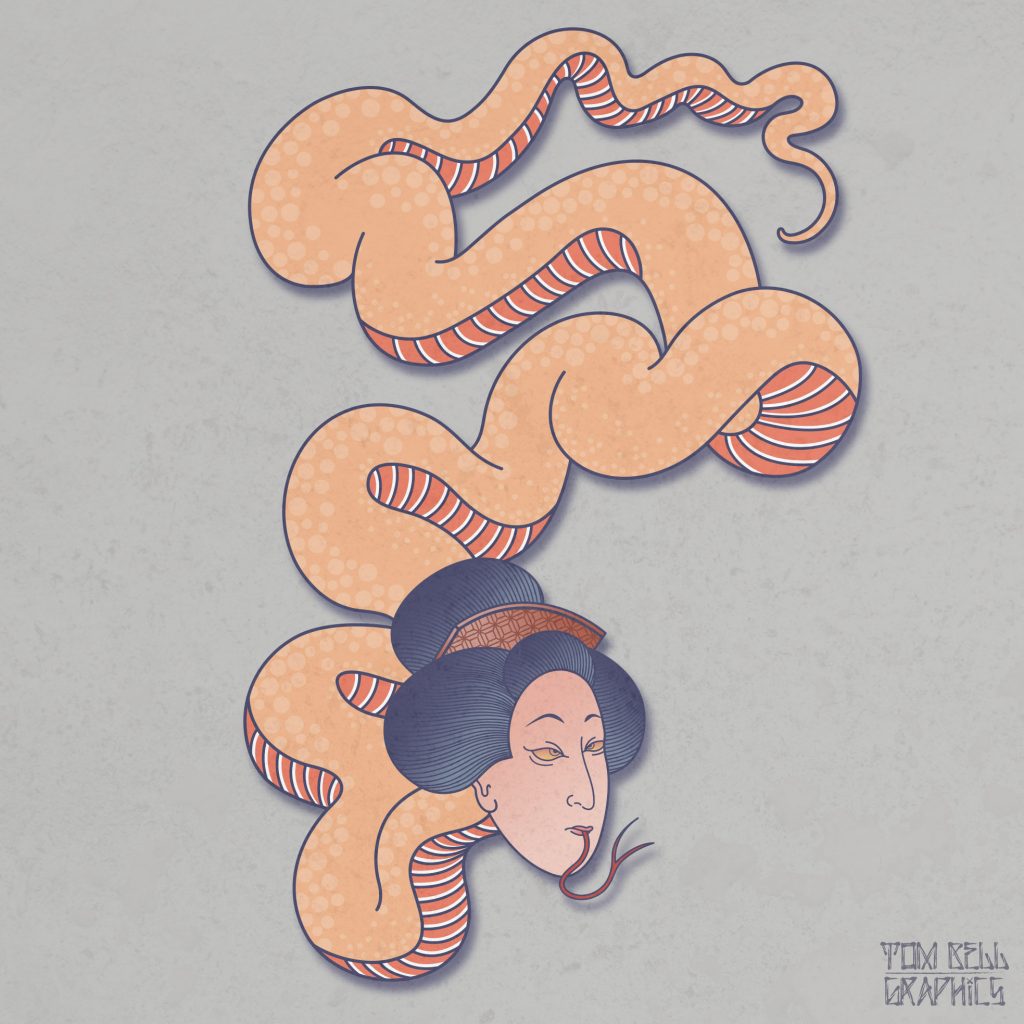
I remember almost a year ago, or at least it feels like that long because of everything that has happened, you mentioned that this show is a farewell to Christchurch because you were planning to move back to Wellington…
Yeah, that’s still the plan [in August]. I’m originally from Wellington, but I have spent almost four years down here. It’s crazy because a lot of people have asked where I was hiding for those first two years! I moved down from Wellington for my graphic design job. At the time my now ex-girlfriend was from Christchurch, all her family were here, so I made the move. I really struggled making connections with people down here. Throughout my twenties I’ve struggled with social anxiety and that really put a big hindrance on me going out and going to shows and other social situations. For two and a half years the idea of going to an exhibition opening by myself, even if I knew people who would be there, would make me really anxious. I would think people are going to look at me and be like, who’s that dude? At the end of 2018 I decided I needed to face some of my weaknesses and get a control of my anxiety.
That social anxiety was a big obstacle for you obviously…
Yeah, the social anxiety was a big hindrance to me. I had people in Wellington say to me: ‘Dude, you should be getting out and trying to make connections in the art community, you’re a designer, you love your art, Christchurch has a really good scene, just start doing it…’ So, when all that happened, I just said, alright, I’m going to put myself out there. I reached out to Jessie [Rawcliffe] because we had started building a connection through Instagram, so I hit her up out of the blue and said you do a lot of collab work, would you be keen on doing one in the new year? She was like: ‘Hell yeah, that would be sick!’ We met up at Smash Palace and started talking about our creative interests. I remember her saying: ‘I paint skulls and girls, am I pigeon-holing myself?’ I said, nah, skulls and girls are ******* badass, and you can tell you really enjoy painting them. From there I was introduced to Josh [Bradshaw] and we’ve been hanging out ever since. I call them my ‘art fam’ and they have been great sounding boards for my creative journey over the last eighteen months. After attending a few exhibitions at the start of last year I started to meet everyone and it was great because it just happened organically.
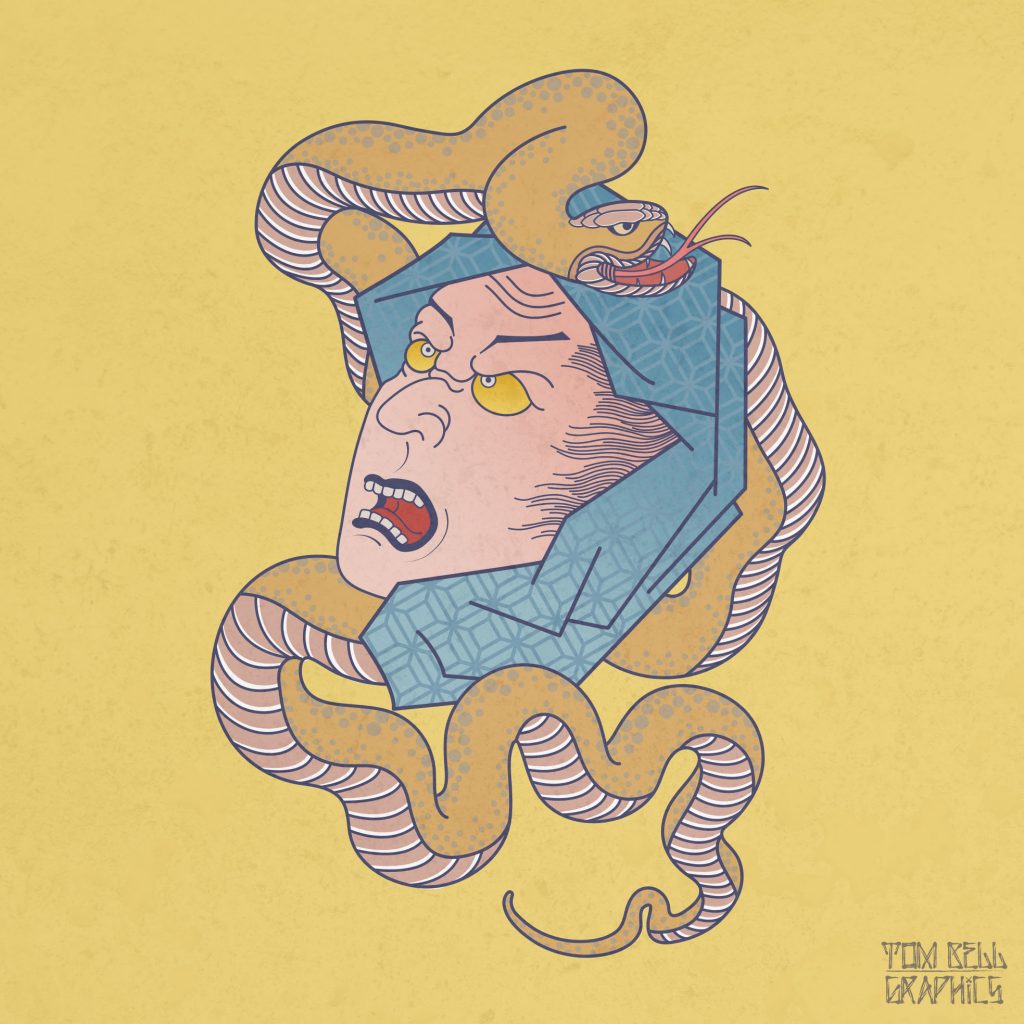
I remember a conversation I had with Jessie and she asked me if I had painted before, and I said, yeah, but I was trash! She said I should get into painting and get away from the computer. So I did and I just got addicted to it, I was all in. From January to March I was painting every night after work, but I wasn’t showing anything to anyone. For me, a painting had to turn out the way I wanted, if it didn’t, it was trash in my mind, so I would put it under the bed and leave it. I think it was about April last year I finally did something I thought was pretty decent. I was comfortable enough to post it on social media and I had a lot of people reaching out to me saying they thought it was great to see me get away from the computer and to be working with another medium. I was like, well, my digital stuff is better than this, but I think people like this because it has more of a human element to it.
I think we appreciate that hand-painted quality in art, there is an evident authenticity…
I started realising that imperfections on a painting actually make it better because they show that human aspect. It doesn’t always have to be perfect, so what if you paint over lines or whatever, it gives it more character…
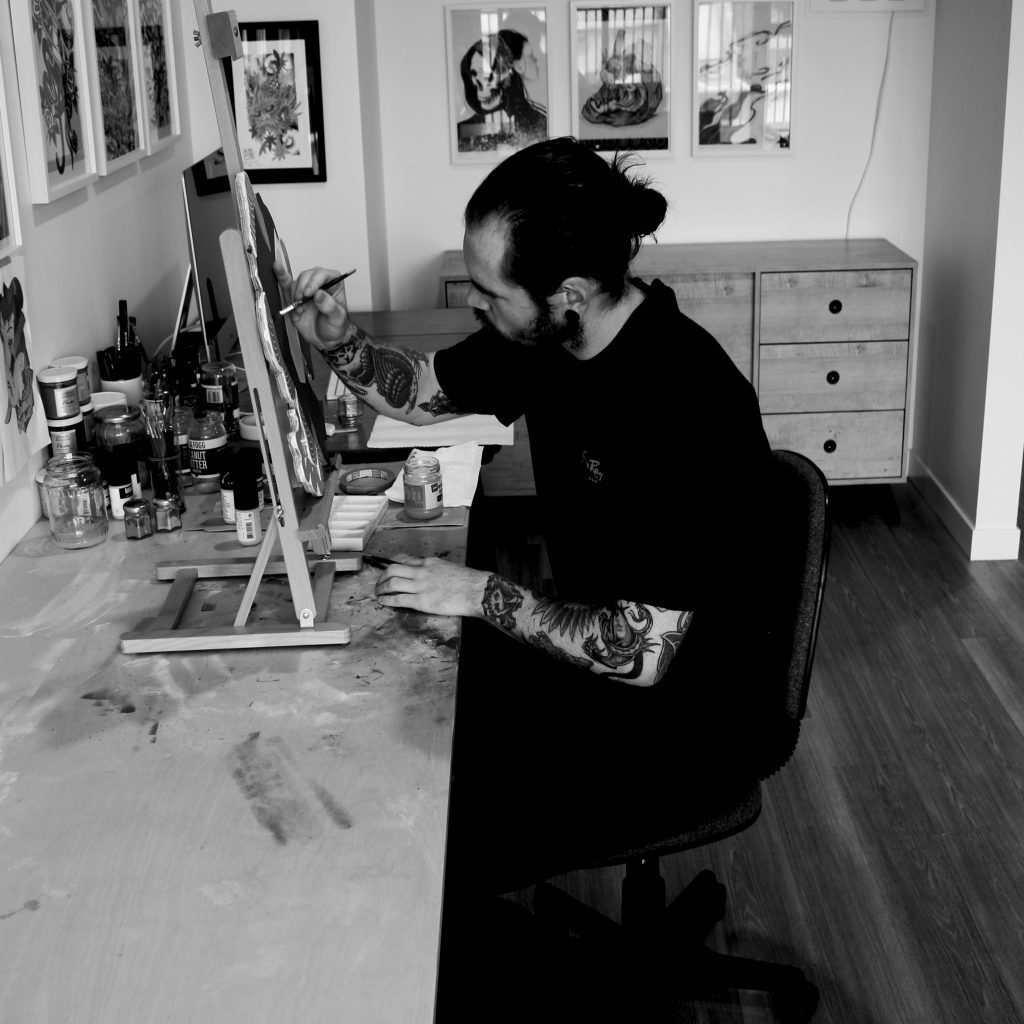
So that kicked off your re-acquaintance with painting?
Yeah. Last year for me was just a lot of trial and error. I was doing everything. I got back into using spray cans, because when I was studying, I started doing stencils, but it had been a while. I remember I did a life drawing class; I was terrible at figure drawing, but it was a requirement. I remember the tutor asking me if I painted stencils and I was like, yeah, how can you tell? He said he could tell from the way I drew with solid outlines. I had no concept of tone or shadow. When I was at high school I didn’t do anything creatively, I was quite sport-centric, rugby, rugby league, and my community in Wellington didn’t see art as a career path, you try to be the next All Black or rugby league star or you get a trade, that’s about it…
I see little difference between sport and art. They are both performances. Sport, at its heart, is about skill, technique, a type of aesthetic beauty, so the total partition between the two is strange, people from the arts world often hate sport, people from the sports world think of artists as weirdos…
In my early twenties, when you discover what you like and what you want to do as a career, I was into sports, but I was also really into art and creativity, and it felt like you couldn’t be associated with both. I got really hung up on that idea, because everyone from high school was like, ‘Oh dude, we hear you’re into graphic design and art and stuff, what’s all that about?’ I think now I totally resonate with friends from high school who were really good artists and they would say: ‘Our school sucks, sports get all the funding.’ I had quite a lot of friends who did art at high school, and they would always be moaning that the art resources were terrible, teachers would have to bring in a lot of their own stuff because they just didn’t have the funding for it…
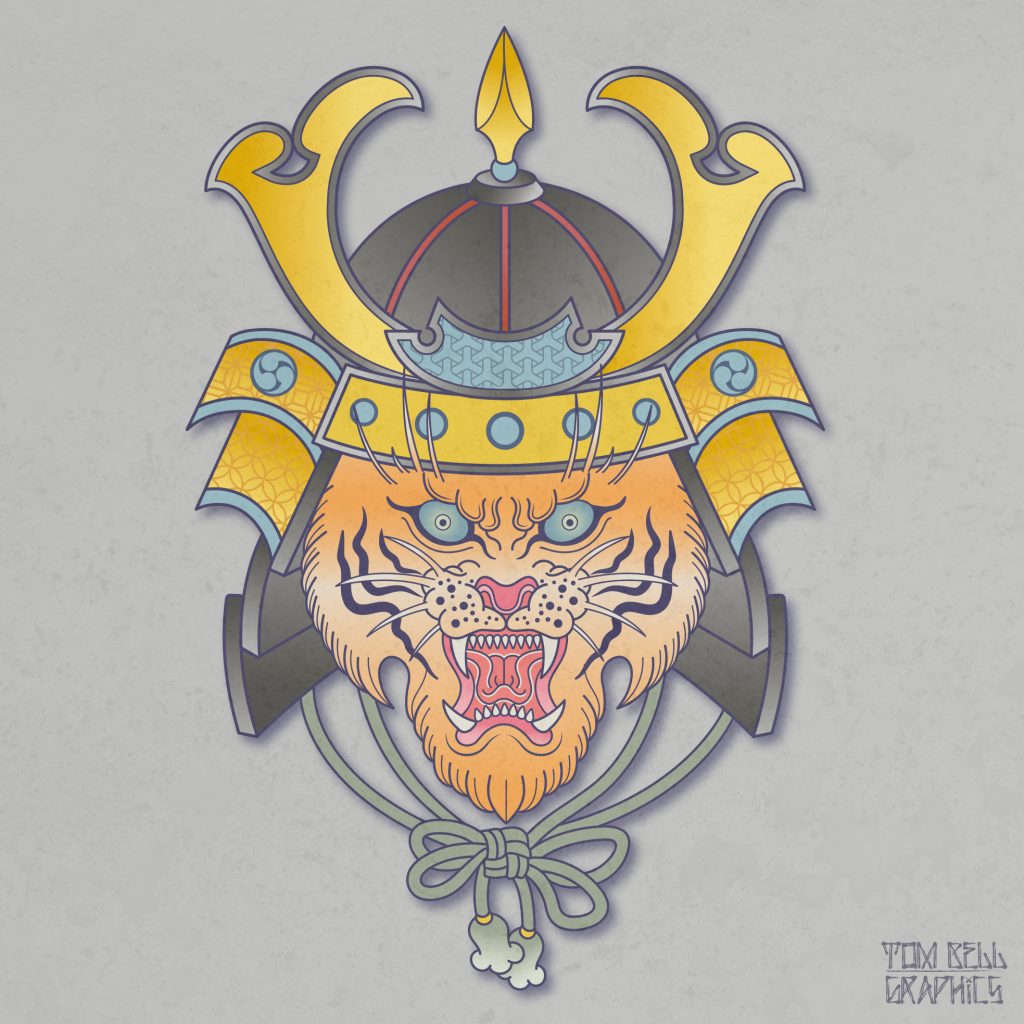
There is a divergence in the way sport and art develop people, I think. In sport, people are eventually trained to follow rules and stick within structures and systems, whereas with the arts there is more willingness to break free. But as I said before, it’s not necessarily an inherent difference. If you think about sport at a more pure level, like pick-up games of basketball, or kids playing soccer in Brazilian favelas, or cricket in the streets in India, those instances are not official, it’s just the love of it and that’s where all the amazing skills and showmanship develop. It’s only once all those other aspects and structures come in, and a particular personality type is preferred, that the focus changes and that freedom is impinged. The same thing can happen in art schools as well. One of the amazing freedoms of urban art is that you are not beholden to convention. I assume your interest in stencils was at least to some degree an interest in what was happening in the streets outside of the institutional world, but there was also a clear connection to the aesthetic of graphic design…
When I first started studying, I came to Christchurch in 2010 and enrolled at the Design and Arts College to do a foundation course. The year before, I decided I wanted to do something creative, but I’d never done anything, so I looked into it and the foundation course in Fine Arts sounded pretty sweet. You did a bit of everything, photography, architecture, graphic design, life drawing, textile design. If you did well enough, you were offered a position the following year. Originally, I wanted to do photography. But when I took the digital media component of the foundation course, which really was an introduction to graphic design, the tutor said to me: ‘What do you want to do next year? I said photography, and he said I should consider graphic design because he thought I had an eye for it. So, from there, I was like alright, maybe graphic design is what I should do. At that time Exit Through the Gift Shop had just come out, and when I saw it my mind was blown! I watched it like four times over a week, and I was thinking, this is rad! These guys are doing stuff on the streets around the world, they are breaking rules, it’s controversial and it’s right in front of people. They’re not going to a gallery to see this, it’s out in the open, so I was like, it could be cool to start experimenting with stencils. I just started looking at YouTube tutorials to get the basics and then I went off on a tangent for like a year doing that. That was in 2010, and at the beginning of 2011 I met Zach Hart who was working at Ink Grave Tattoo at the time, I started getting tattooed by him and I learnt that he had a graffiti background. That grew my interest and I found out there are a lot of tattooists who have graffiti backgrounds. I’m also really into hip hop and there’s that association with graffiti also.
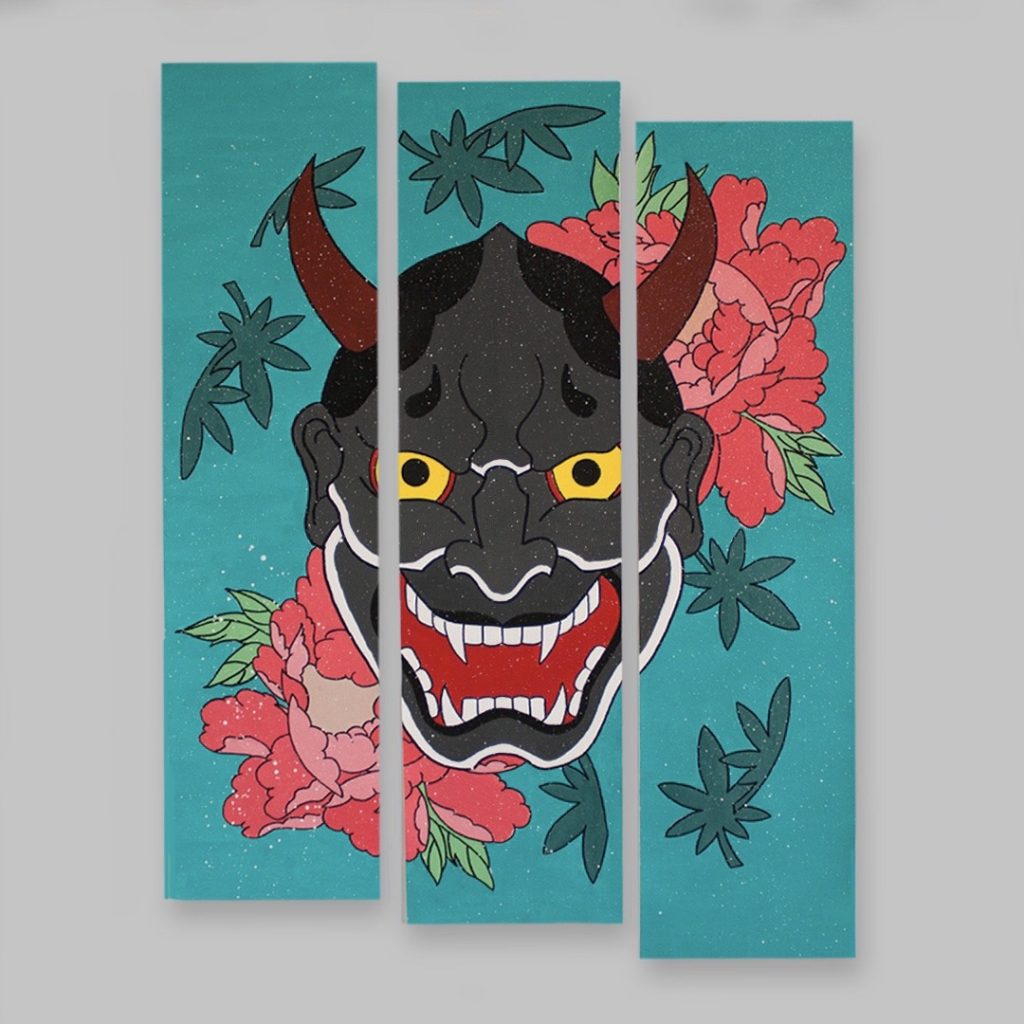
Since I was eight or nine, I’ve always been into tattoos. No-one in my immediate family has tattoos, but I just had a fascination with them. When I was eleven or twelve, I was at the library and I came across a book of Japanese woodblock prints from the early 1800s, and then I found a tattoo book and the images were pretty much identical. I kind of put my interest of Japanese art to the side when I was studying at university but in my mid-twenties I fell in love again with Japanese art and architecture. Since then it has just fully consumed me. My best mate is a tattoo artist in Wellington, he specializes in Irezumi [Japanese tattoos], and I have learnt a lot from him. I think the reason why I like Japanese art so much is that it’s very graphic, it’s designed to be big and in your face with bold outlines and flat colours, but there is still a sense of refinement that gives it a timelessness…
There is an important balancing act when you adopt a historical visual influence, you need to respect that lineage, but also make it fresh and not derivative. How do you approach that challenge?
It is about knowing the subject matter. For instance, a koi fish swims up stream and turns into a dragon, so if I was ever to draw a dragon or a koi, I can’t draw a tiger with it because they don’t go together. It would be easy for people to look at my work and think it’s just Japanese tattoo flash, so my contemporary take on it has been my choice of colour palette. I think my interest in Pop Art has contributed to my use of pastels, there’s a David Hockney piece, A Bigger Splash, it has flat colours, blues and caramels, and that was a big influence. It was painted in the sixties, but it still feels very fresh, so taking that and playing around with colours has allowed me to develop my own take on Japanese art while still sticking to the belief systems. I think some people try to reinvent the wheel and they forget about the fundamentals. My graphic design work is very minimal and with minimal design you’ve got no room for error, if you have one little thing that’s off, it’s going to stick out like a sore thumb, so I focus on the fundamentals with just smaller, subtle changes.
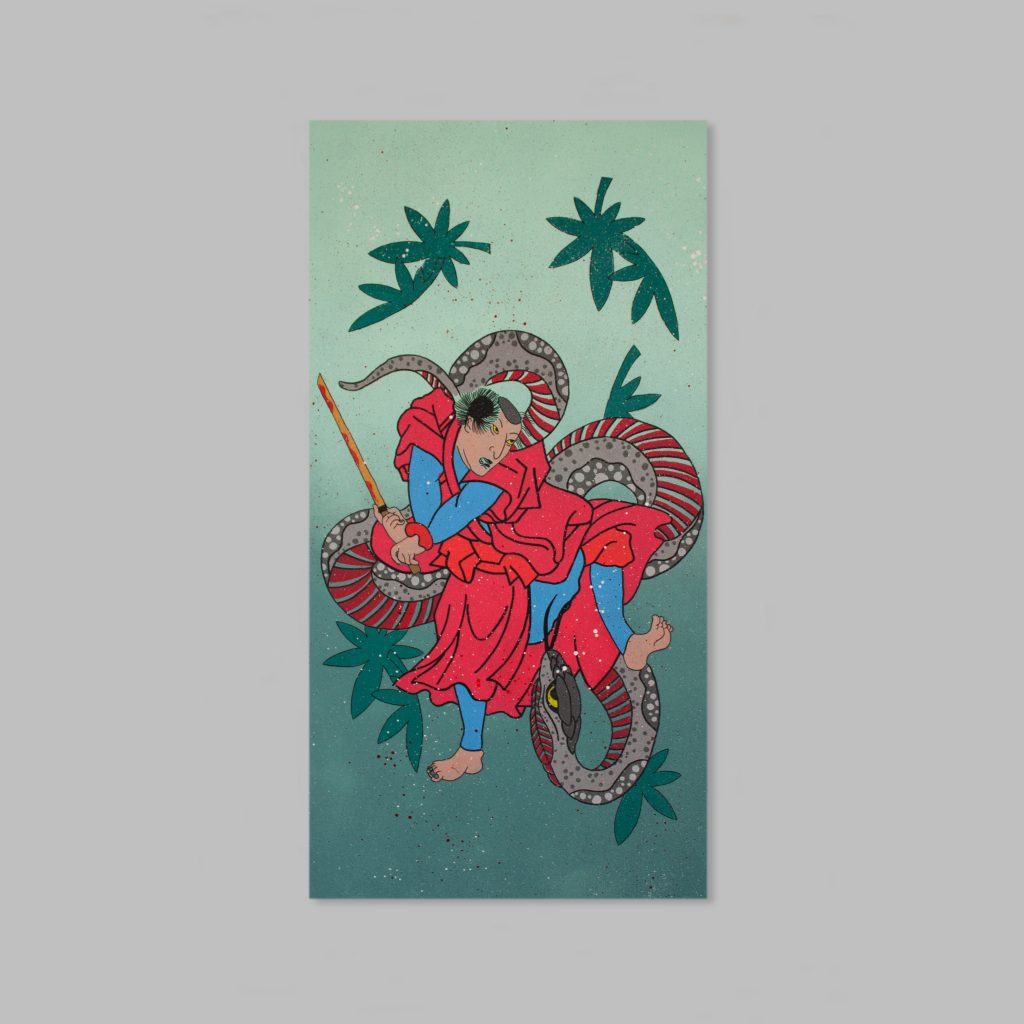
You were telling me earlier that it is only the last six months or so that you’ve become comfortable calling yourself an artist. That background in graphic design and digital work, how do they feed into your painting work, because they must be very different approaches…
When I first started painting again last year, it was tough. With design, when you don’t like something, it’s the classic ‘Command-Z’, undo, so I was very thorough in preparation. I would do a colour study and draw it on screen, colour it, print it out and then from that, paint it, doing like for like. It was very uniform. But eventually I started to just do a quick colour study on screen and then started painting, and now I’m at the point where I don’t do the colour study I just paint it.
Sometimes things look good on screen, but when I’m actually painting it, it doesn’t work. So, I think the last year has really taught me to be looser and freer when I’m working with my hands, to not be such a control freak. Normally I’m a perfectionist, especially with my graphic design work, it’s like, that’s terrible! Back to the drawing board! But when you make a mistake on a painting, when an outline has smudged, there’s a human element to it, and that’s something that I have probably learnt to appreciate. I went to a tattoo convention in New Plymouth last year and there was an artist whose paintings I love, and he was selling prints. I could see there were little imperfections in the print, and it was fine, I realized I’m just too much of a control freak. I think that freedom is why there’s been no ambition at the moment to go back to the digital side of things, because I like the fact that if you screw up a painting, you’ve got to problem solve on the spot and work with what you have…
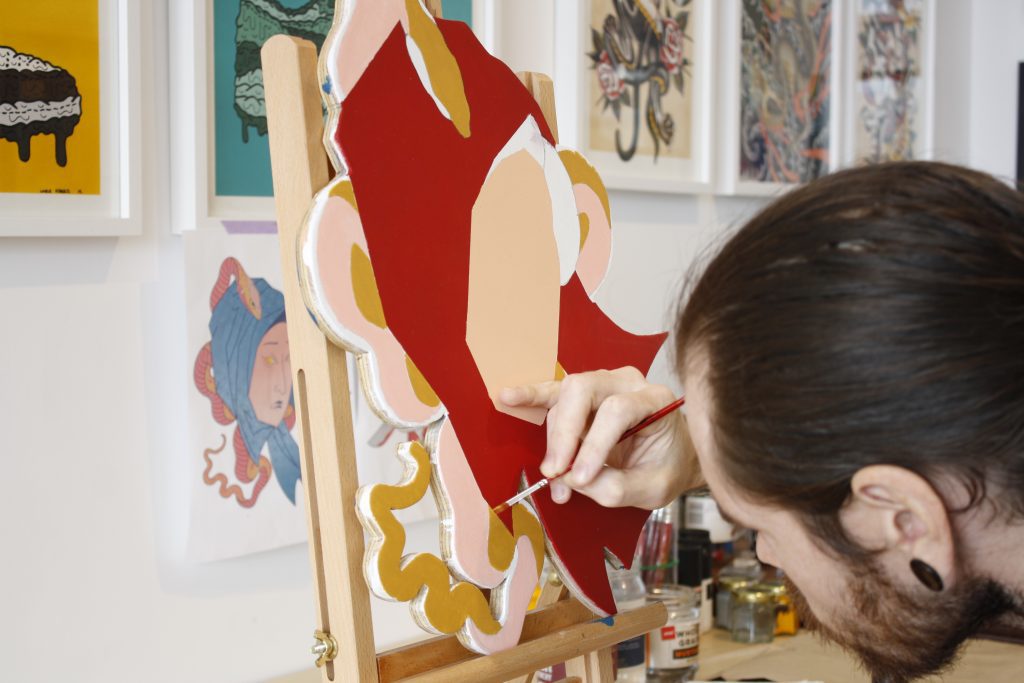
I’ve always loved the idea associated with Margaret Kilgallen’s work, the wavering line. I think we need to attach to something human in an increasingly technologically-driven world, we become hyper aware of when something is perfect, and we recognize imperfection from another human and I think that is really important. You were talking about that idea of going back to painting being inspired by conversations with friends, that idea of community must be a really important part of where you are, is losing that when you move back to Wellington a daunting thought?
It hit me this week that I’m moving soon. I’ve got my two best mates coming down for the opening of Adoration, Mike Todd, a tattoo artist, and Jerome Taylor, who I went to high school with, who is a fashion designer. They are my creative community up there in Wellington. When I started getting tattooed by Mike, he knew I was painting on the side and he was giving me tips, like how tattoo apprentices learn, you trace a rose fifty times and by the twentieth time you should know how to draw a rose. He’s been a big part in me fundamentally learning how to paint the way I do. But in terms of what I’ve got here with Jessie and Josh and everyone else, I don’t have that. It’s a bit daunting, but I did it here, I just have to put myself out there. I’m from Wellington, so I should be able to connect a bit more if anything just because I’m local. I think having a show here will help open some doors up there. It’s funny, I already know I want to do another solo show in Wellington next year. I’ve already got ideas bubbling about what I want to do for my next show. It’s contagious, I reckon, it consumes you, but I’ve really enjoyed the process…
How did the show come together conceptually?
When I confirmed this show last year, I was still working at my old job, in a corporate structure, getting paid to do a job, and I just really felt like I was being controlled by the man. I didn’t want to sound like a temperamental artist, but I really struggled with being told to be creative within a certain framework or it wasn’t of value. So when I was coming up with themes for my show, I was thinking about basing it on entrapment and having conflicting thoughts in my head, and just lacking self-worth in a way, but then in January, I drew out my whole show in a wall plan to see if it was going to tell a story, and I realised it doesn’t have to, screw that! I’m leaving town soon, I just want to do something that I’m passionate about. It is filled with traditional Japanese influences but with a contemporary take. There are a few pieces where I have dissected objects and have incorporated other objects with them. Textures play an important part in my inspiration so I wanted to bring them in also. The show is about paying homage to Japanese art and culture, and that’s why I named the show Adoration, it’s about devotion and how I hold it dear to my heart.
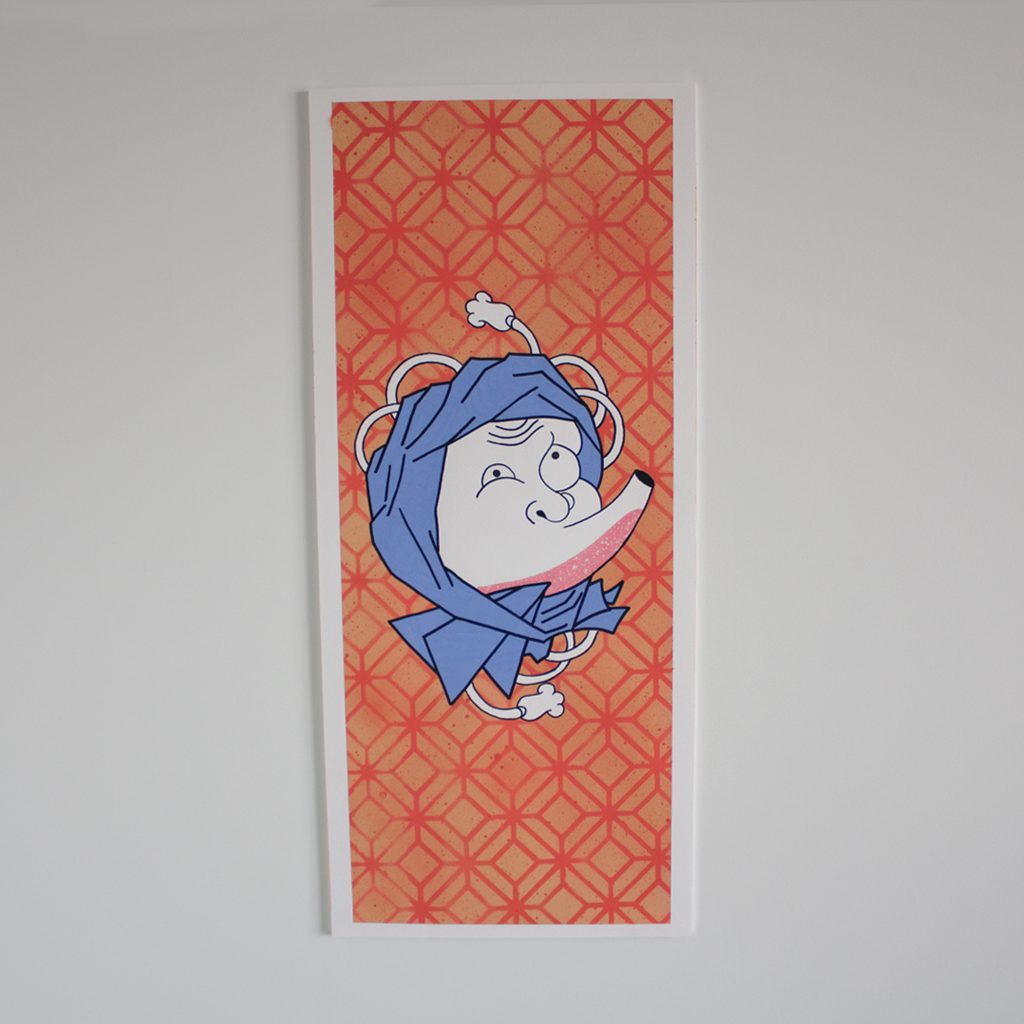
We talked briefly about artists being pigeon-holed, do you ever think about that in terms of the Japanese influence in your work?
Totally, I always think to myself, am I pigeon-holing myself with my interests? The one positive to come out of lock-down was new ideas I want to paint when I move back to Wellington. It’s abstract, with no Japanese themes at all. I haven’t told anyone about it, I don’t know if I want to push this, I don’t know if I want to show anyone, I’ve done some real rough sketches and I don’t think anyone would expect it.
I assume they will likely see the light of day in Wellington, which means that while this show brings this chapter to a close, this new body of work might start the next chapter…
As much as it’s been a really good time painting the work in this show, I think this is the perfect time to start some more experimental stuff. A lot of people have asked why I don’t get into tattooing, because it makes sense with my subject matter currently. But I don’t want to keep exploring the same themes and imagery and that’s the connection people seem to make, that my Japanese- influenced work would translate to tattoo. It’s something I have warmed up to in the last six months as I’ve become more confident with the hand-rendered stuff, but tattooing is completely different from painting, it’s a whole new technique. Once I’m back in Wellington, I’m going to use the rest of this year to have a play around and try some experimental stuff, do more freehand work, which is something I have been working on for the last six months. I guess there has been a lot of personal growth down here in the last two years as well…
So, this is an important milestone…
It is an important milestone. About six months ago I realized that it makes sense to have my first show here in Christchurch, because this is where my creative journey really started. Obviously, I went back to Wellington after the 2011 earthquake and relocated to continue my studies up there, but really making things all started here, so it all makes sense. It’s like a goodbye gift, my time here is up, but this is where it all started for me. I never thought I would have a solo show, I never thought I would have my work in a public space where people would want to come see it. I think we all get a little nervous, like are people going to show up? I’ve had a lot of people reaching out to me saying they are looking forward to seeing the show. Getting messages like that has been really humbling.
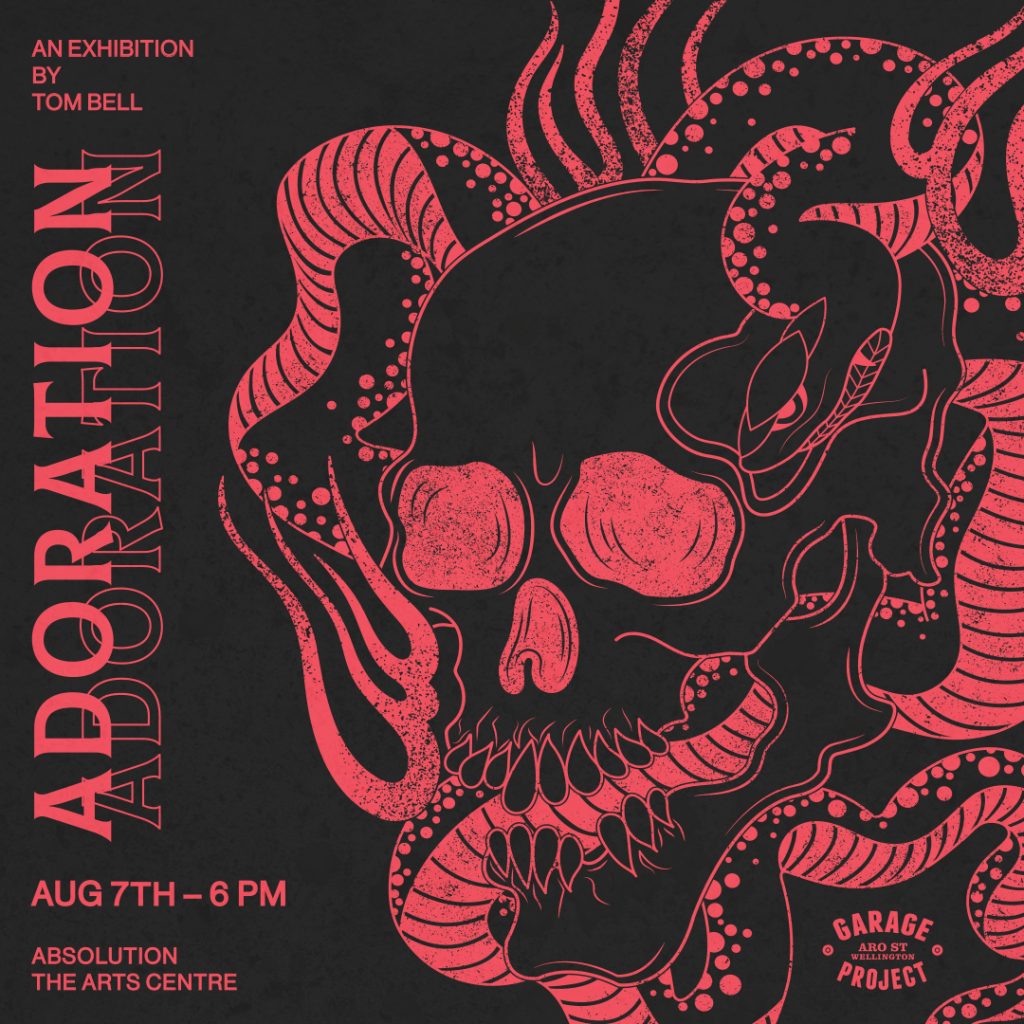
That must be cool because as you have mentioned, the process of creating work and then the step of putting them out in the world can be scary. It’s a long and constantly changing road, the process and development, the failures, the changes of direction…
Yes, it’s a vulnerable position because you work on something for so long and then you think you are comfortable to show people, but once it’s in a public space, once it’s out there, then it could be well received or it might not be. It’s all part of it and I look forward to seeing how people interact with the show on Friday.
Adoration opens at Absolution in the Arts Centre on Friday, 7th August, 2020 at 6pm.
Follow Tom on Instagram and Facebook and check out his website…

